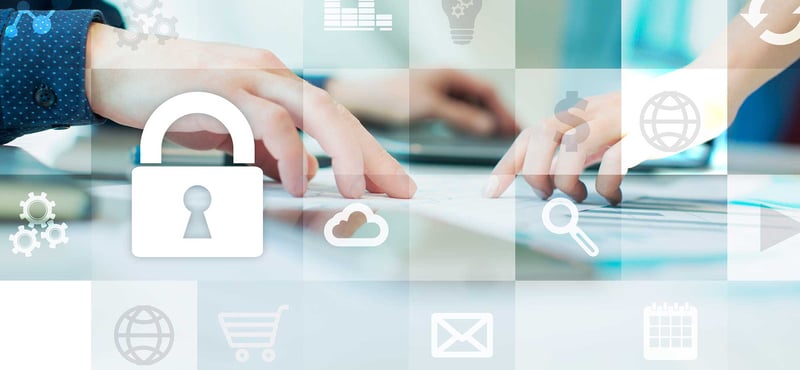In the past, cyber security has mainly been seen as a way to secure a company’s internal systems and networks. Companies have traditionally focused on protecting their technical IT infrastructure, and securing their workstations, data, and applications.
Modern cyber attacks and cyber security breaches, however, require a broader perspective on cyber security. In a networked world, you also need to protect your company’s brand elements and digital assets, which requires focusing on the internet and its interfaces.
Most companies today manage their product development, mobile platforms, and customer data in the cloud. Employees access social media channels from anywhere, anytime. As businesses across all industries become increasingly digital, we need to change the way we think about cyber security.
Protect your brand from cyber security threats
Fake websites can skillfully mimic the look of banks, insurance companies, technology suppliers, electricity companies, and software vendors. Since everything looks real, customers are lured into sharing their bank ID or other personal information.
When cyber criminals use a company’s brand, logo, or the name of a key person in a scam campaign, they damage both the company’s reputation and its revenue. What’s more, customers often lose their trust in the company's brand and operations.
Your company brand includes several technical components and digital services that require security in a networked world. These include your domain, IP addresses, name servers, and SaaS services, for example.
Consider these key points for your company’s cyber security:
- In addition to monitoring your internal IT infrastructure, also monitor the internet and its interfaces.
- Prevent the misuse of your brand, logo, and key names and usernames.
- Protect your domain, web addresses, name servers, and SaaS services.
- Strengthen the security of your physical sites by scanning and identifying threats to them from the internet.
Internet threat intelligence takes enterprise security to a new level
You can identify cyber risks on the internet and its interfaces by tracking the use of your company name, logo, names of management team members, usernames, email addresses, and copyrighted photos and videos. Use machine-based analytics to find your company name and ID online, and check:
- Are there scam sites linked to your company on the internet or on the dark web?
- Have there been any fake accounts on Instagram, Facebook, or LinkedIn that transmit malicious information on behalf of any employee?
- Have your key IDs ended up in the wrong hands? Where are they used and how?
For example, if you find your CEO’s email ID on the Tor network, that requires a closer look.
The technology you use will generate alerts so you can identify potential risks for your company, personnel, or customers. The earlier you observe any suspicious use of your brand & digital assets, the more efficiently you can react to them and minimize risks.
What should you monitor?
With a digital risk protection and management service, you can place a record on the internet to identify and track activity around a person, thing, product, or service.
For example, a listed company should keep track of the names, social media accounts, and emails of all members of the management team. The company can also monitor its physical sites to quickly obtain information on threats detected in the vicinity of the production unit or head office.
It’s also important to track and monitor online conversations. Is your company mentioned in any threatening discussions? Additionally, you can monitor the hotel that employees stay at during a business trip so that the employees there can be informed about a dangerous incident in the vicinity 24/7.
To sum it up, here are three tips for protecting your brand and digital assets, and strengthening your company’s security:
- Expand your security focus. Firewalls, secure intranets, and terminal protection are still essential, but in a networked world, you need to expand your cyber security focus on the internet and its interface services and solutions.
- Identify and protect resources that are important to your business. It’s crucial to identify resources that connect to the internet so that they can also be protected. You can do agile mapping and check, for example: What kind of competitive factors will be integrated into the company with an acquisition? Cyber security solutions have evolved tremendously and offer increasingly powerful security technologies.
- Ensure comprehensive security expertise. Without outside expertise, companies will not keep up with the rapid pace of information security and cyber risks, such as monitoring their environments or the internet 24/7.





